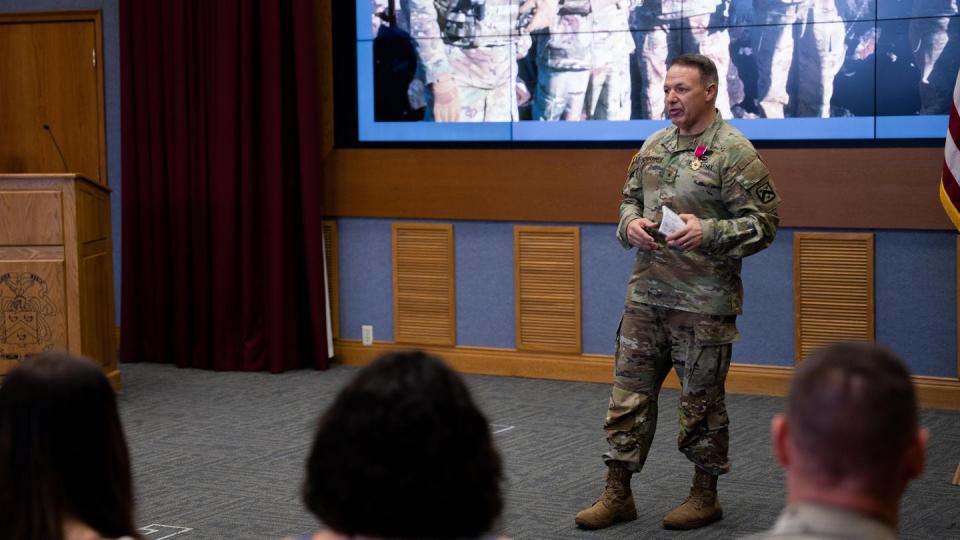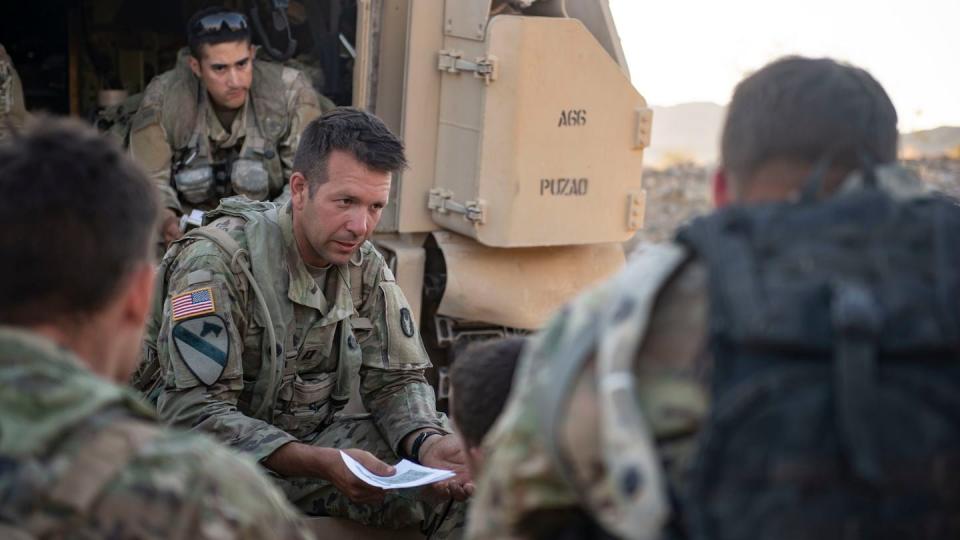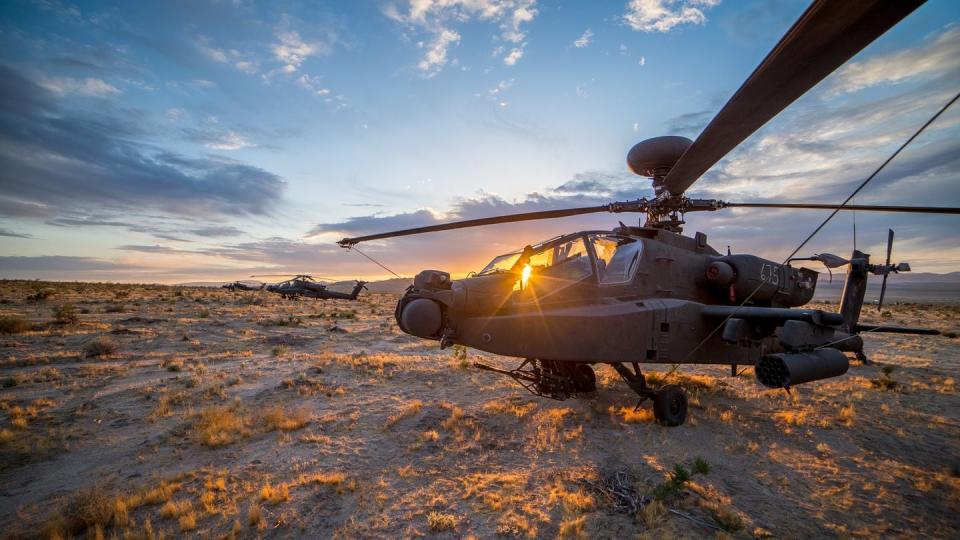Army slowing deployment cycle for busy armor units, assessing others
When the Army announced its Regionally Aligned Readiness and Modernization Model — or ReARMM — in 2020, the service’s top leaders argued it would improve soldiers’ quality of life by making their training and deployment cycles more predictable.
As originally designed, the force generation model called for a two-year cycle divided into three eight-month phases — modernization, training and mission. But experts and soldiers interviewed by think tanks feared it was inflexible and couldn’t account for inherent differences between unit types.
Now, the service is announcing changes to the model for armored units after an Army Times report revealed elevated suicide rates in some of those formations. Army leaders say they are exploring options for “tailoring” ReARMM for other types of units as well.
BROKEN TRACK: Suicides & suffering in Army’s exhausted armor community
Maj. Gen. Charles Lombardo, a senior Army headquarters official overseeing training plans, told Army Times in a March 18 interview that the service recently “expanded ReARMM phase lengths from eight months to 12 months for the Armored Brigade Combat Teams.” Deployments will remain eight months in length; the lengthened mission phase now accounts for equipment transit. Lombardo, a career armor officer, discussed other service initiatives intended to alleviate strain on the Army’s armored force as well.
Army Times also spoke with force structure and force management experts, as well as soldiers familiar with executing the training model.
Michael Linick, a retired infantry colonel and RAND researcher with expertise in force management, penned a December 2023 report about the ReARMM model’s intersection with other Army systems and its impact on soldiers. He said there is a “disconnect” between Army senior leaders’ rhetoric on “taking care of people, long term investments and human capital” and how operational- and tactical-level leaders are incentivized to deliver readiness above all else.
Lombardo and Army leaders aim to close that gap, both by reining in overambitious commanders and adjusting systems to set units up for success.
Changes for armor units, reducing ‘mission creep’
Restructuring ReARMM for armor brigades is a key step toward keeping soldiers in their own beds between deployments, Lombardo argued. The longer phases are just a start.

The original eight-month model had little room for error. Unexpected delays could derail the modernization or training phases, and units often lost their final weeks of training in order to ship their vehicles overseas for deployments.
The service began revising ReARMM for armor units around a year ago, Army officials said. One lesson that likely informed Army leaders: the 3rd Infantry Division’s 1st Armored Brigade Combat Team took roughly 18 months (10 longer than the previous modernization phase’s length) to field new tanks, according to a release.
Mark Cancian, a retired Marine Corps officer and force structure analyst for the Center for International and Strategic Studies, said “eight [months] is too fast to be sustained for the long term.” Cancian said the Army’s shift toward 12-month ReARMM phases is “headed in the right direction” for tank units.
Lombardo, the two-star general, said that Army headquarters is taking deliberate steps to “slow down the tempo at home station” for those troops as well. Training progressions, which climb from crew-level gunnery through successive echelons to the brigade level, can wear down soldiers and their vehicles when executed in rapid succession.
The Army also wants to start sending units on combat training center rotations at more optimal times in their mission preparation, Lombardo added. An Army official said that armor units may also see streamlined training requirements in the future that could eliminate some redundant standards and reduce the amount of time spent in the field banging up their vehicles.
According to Lombardo, Army headquarters officials are also stepping up their oversight of lower-level training exercises in an effort to reduce troops’ time away from home and limit the strain posed by maintenance.
By carefully managing what units should be accomplishing and when, the Army aims to “eliminate or reduce the mission creep from commanders and ... lock in requirements” to ensure that training calendars have predictability and so-called “white space,” he said.

Linick, the RAND researcher, said that such space on unit calendars plays a critical role in achieving people-oriented goals such as mandatory trainings, building unit cohesion or even taking care of issues at home. But he and his coauthors cautioned in the December report that such open time on a unit’s calendar can lead “higher-level headquarters [to interpret] that as excess capacity and ... fill that white space with additional taskings or requirements.”
Lombardo added that spacing out training events across the lengthened modernization and training phases of ReARMM should empower armor unit commanders to “provide programmed, deliberate maintenance operations” that keep their vehicles healthy and reduce the amount of work rolling down onto maintainers.
Another avenue for cutting down the maintenance workload, according to Lombardo, will be the Army’s plan to do an “operational reset” — or depot-level maintenance overhaul — of a “limited amount” of the service’s oldest tanks on an annual basis. The move could allow maintainers to focus on their most capable vehicles rather than pouring time into decrepit ones. Linick and Cancian also suggested that poor recruiting has made it challenging for units to keep all of their crews at full strength as well.
“We’re fighting hard at the department level to rebuild and reset this [tank] fleet ... so they can truly just focus on fighting and training and not be overwhelmed with the maintenance activities,” Lombardo said. Other measures — including increased funding for spare parts and mechanic training — also aim to alleviate maintenance stress.
Different units, different needs
Other types of units may also require tailored versions of ReARMM in order to optimize their readiness-building path, Linick argued.
Citing focus groups of Army officers and noncommissioned officers assembled for the December report, Linick and his coauthors said “several interviewees clearly articulated that ReARMM seems to be a brigade combat team-centric model that does not fit well with units that either have limited modernization needs or have significant and ongoing missions.”
Members of specialized support units, such as expeditionary military intelligence brigades, said a cyclical model doesn’t make sense for their formations because their members are in constant use.
One senior training staff member told RAND researchers that eight months may actually be too much modernization time for light infantry units in some cycles.
“In light infantry, our modernization does not impact us as much. It’s very small,” he said. “You’re going to get a new radio, OK.”
A division-level planner, who asked that Army Times not publish his name because he was not authorized to speak to media, criticized the model as “overly prescriptive” and “one-size-fits-all.”
Lombardo (and Forces Command officials cited by Linick in the RAND report) said the service is aware of the need for adjustments. He said the Army is continuing to analyze and adjust the cycles for specific unit types — armor units were merely the first on the list.
“The next unit cohort we’re looking at is Combat Aviation Brigades,” said Lombardo. The Army’s flying units have been in high demand for many years, and their modernization and training needs are complex — and potentially dangerous if executed too hastily.

Such haste to meet training benchmarks may have contributed to two deadly mid-air collisions in early 2023, according to the Army’s aviation chief.
The head of the Army’s aviation branch, Maj. Gen. Mac McCurry, told Army Times in October 2023 that “some units were out-training their level of experience” when trying to tackle unit-level training progressions that outstripped the typical two-ship missions that personified the branch’s operations during most of the Global War on Terror.
Op tempo, training complexity pose risk to aircrews, per aviation boss
Lombardo is bullish on the Army’s ability to get force generation right.
“The ReARMM model, when followed ... is going to provide predictable lifecycle windows,” he said. “We ... have to continue to be willing to look at ourselves and assess and refine [the model].”
But despite the Army’s apparent willingness to adjust in whatever ways it deems necessary to make the ReARMM cycle more efficient for its units and soldiers, some service members remain skeptical that soldiers will see the benefit.
“Whether they’re calling it ReARMM or something else, it’s all the same, right?” said one soldier, whose identity was withheld in the report, to RAND researchers. “You come into work thinking you’re going to do something and then something else happens, what you have to do changes, and you get on with it.”

